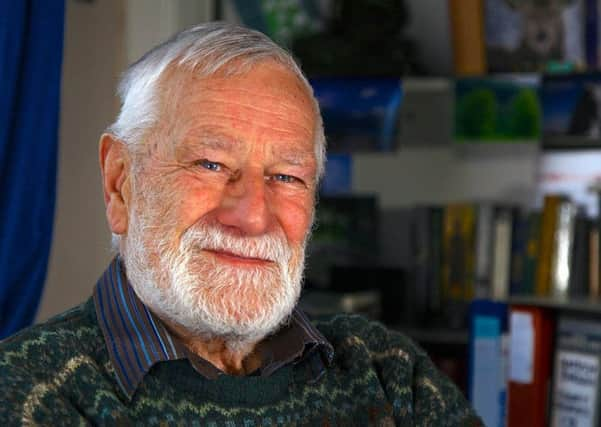Book review: Walking The Song, by Hamish Brown


The first chapter, “Beginnings”, opens with a white-knuckle account of the Brown family’s escape from Singapore in January 1942 (“I’ve vivid memories of Singapore in flames, of singing in the shelters, of the frantic scurrying of terrified people”). Following straight after, we have “Starting in the Ochils” in which he describes his return to Scotland and life as a schoolboy in Dollar; he wasn’t a fan of the school, but up in the hills he soon came to know “every cranny, every pool, where what flowers grew and what birds nested”. Straight away, then, although it’s never overtly stated, his love of the outdoors is framed as a kind of escape, representing deliverance from both the flames of Singapore and the tedium of the classroom.
Three of the following four chapters deal with his Scottish adventures, and a few of the articles here – in particular the account of a Christmas ascent of Roineabhal on the Isle of Harris – contain writing so vivid and precise that reading them is like being reminded of memories long-forgotten. The other chapter in this section of the book, “In The Past”, is a curiosity; most outdoors writers only refer to history and folklore en passant, but here Brown picks four true stories that have passed into legend and inhabits them in much the same way that a good folk singer can take a well-known song and make it their own.
Advertisement
Hide AdThen, after a chapter of inspiring stories accumulated during his time as a trailblazing outdoor education instructor at Braehead School in Buckhaven in the 1960s and early 70s, we’re on the road for the duration of the book’s second half – a whirlwind tour of some of the finest hillwalking country in the world, taking in Peru, Iceland, Norway, Austria and Morocco’s Atlas Mountains, which swiftly became the author’s “second home”.
The prose is never less than sparkling, but even the best writers can benefit from careful editing, and there are one or two instances here where Brown has been let down by his proofreaders. For example, it’s unfortunate that in a passage where he criticises various guidebooks for claiming incorrectly that Disraeli’s family came from Essaouira on Morocco’s Atlantic coast, he then goes on to incorrectly identify the famous Jimi Hendrix song inspired by the place as “Castles in the Sand”. Similarly, it’s a shame that the rather jarring abbreviation “C20” for 20th century is allowed to stand throughout, as it gives the impression that this is a rough draft rather than the finished article. Still, these are very minor quibbles; for anyone who, like Brown, has “always heard the two mighty voices (hills and sea) and been addicted to travelling afoot”, this is essential reading.